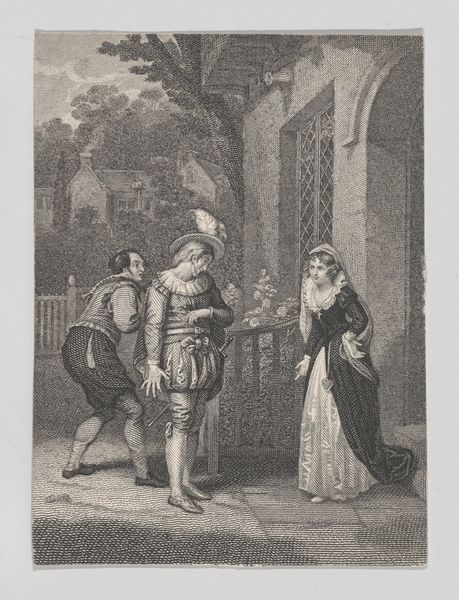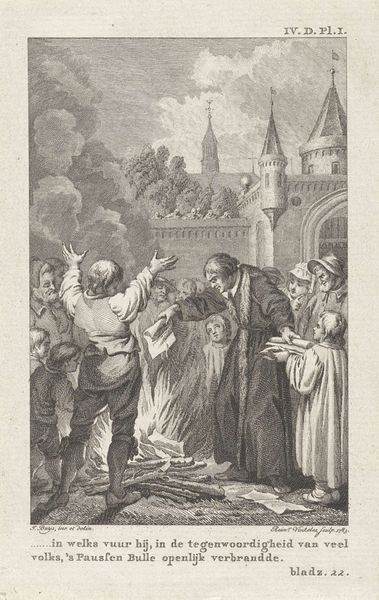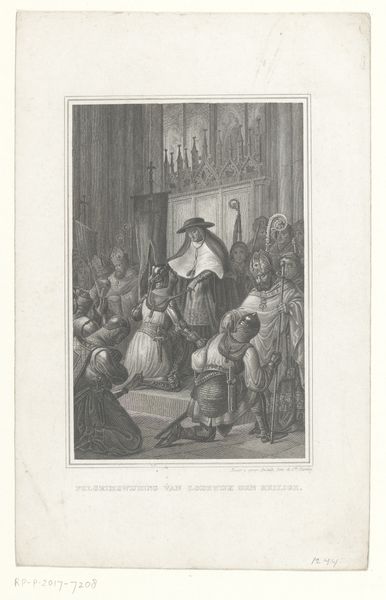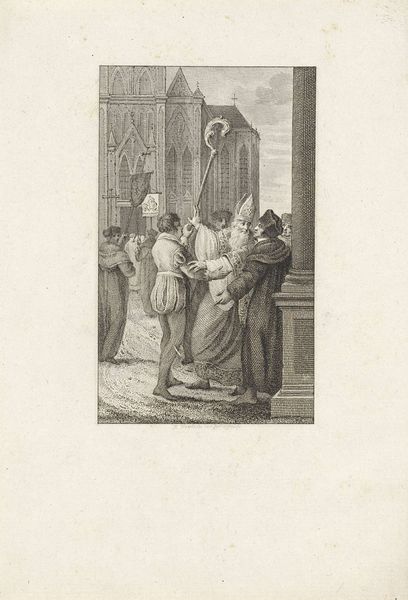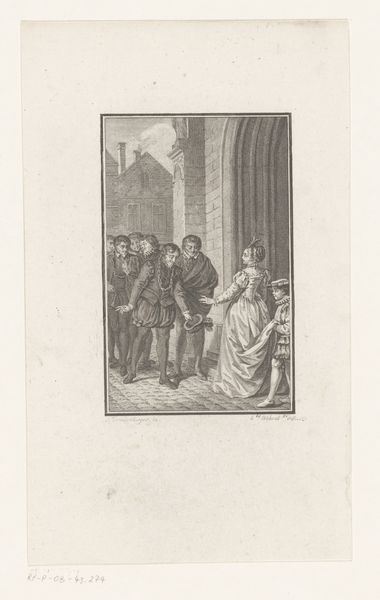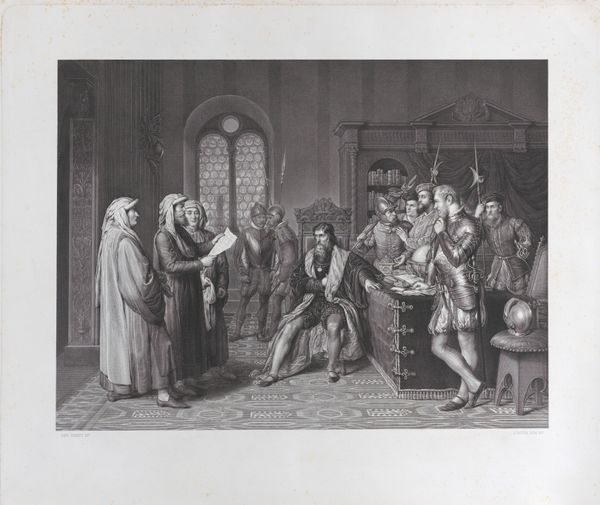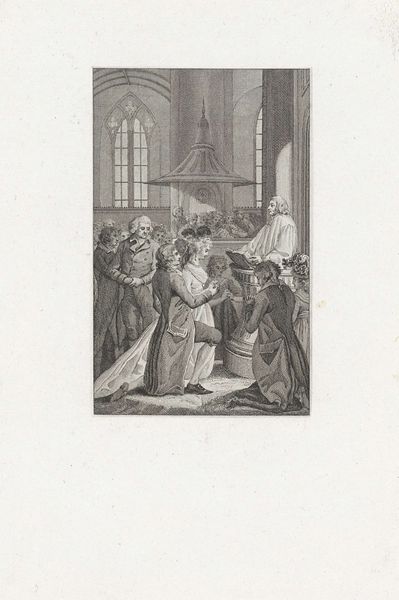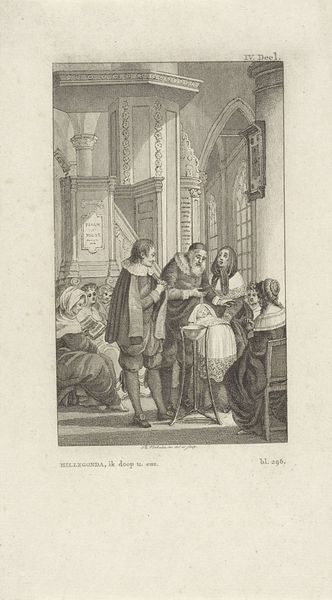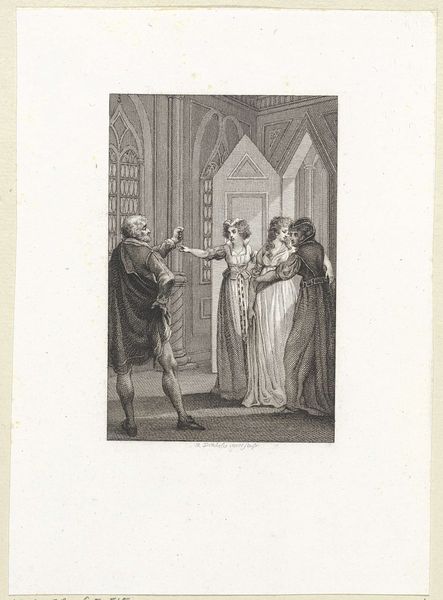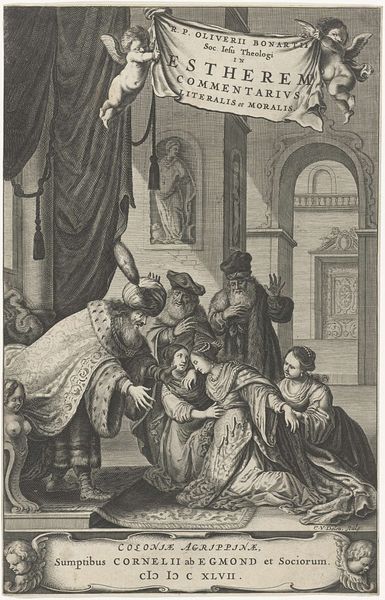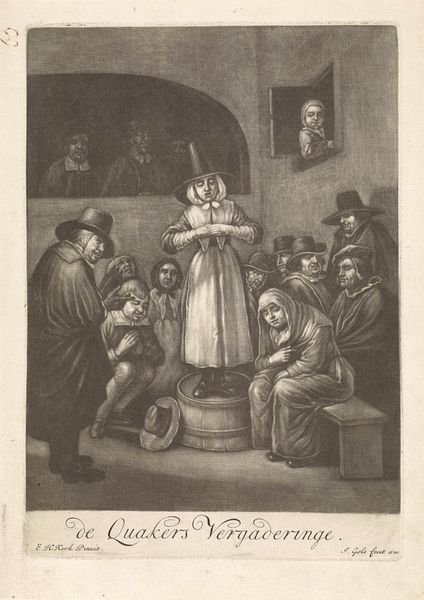
Salanio, Salerio and Shylock (Shakespeare, Merchant of Venice, Act 3, Scene 1) 1825 - 1840
0:00
0:00
drawing, print, engraving
#
pencil drawn
#
drawing
#
narrative-art
# print
#
figuration
#
romanticism
#
men
#
history-painting
#
academic-art
#
engraving
Dimensions: Sheet: 3 7/16 × 2 9/16 in. (8.8 × 6.5 cm)
Copyright: Public Domain
Curator: At first glance, the immediate tension derived from the clenched fist and assertive posture immediately strikes me. What do you see? Editor: Indeed! This engraving, made sometime between 1825 and 1840 by John Massey Wright, illustrates Act 3, Scene 1 from Shakespeare’s "The Merchant of Venice," titled "Salanio, Salerio and Shylock." Look how Wright composes the scene, he draws our attention right to Shylock in that moment of anguish. Curator: Precisely, the figures, particularly Shylock, are meticulously rendered with fine lines, creating depth and volume through contrasting values. Consider the buildings in the background: are those domes part of Venice, would you say? Editor: The domed structure is a lovely choice as an indication of place. John Massey Wright, though British, places the play directly in its historical setting, utilizing those well-known Venetian architectural motifs. We are reminded that while Shakespeare provides us with universal lessons, it exists in the context of Venetian-Jewish relations. Curator: Note the symbolism. His posture creates dynamism, almost disrupting the overall balanced composition, wouldn't you agree? The positioning makes us aware of his displacement from harmony. Editor: Yes, and in the historical context, such dramatic representations played into existing stereotypes about Jewish people at the time. It would be interesting to know what nuances in the narrative this was initially purposed to represent, being widely distributed in print as it would have been. Curator: Absolutely. What a remarkable synthesis of emotion, form, and historical backdrop, leaving much for us to examine in both the artistry and historical placement of this print. Editor: A fascinating example of how visual storytelling through the conventions of the time invites scrutiny into not only the artwork itself, but the moment in time in which it was made.
Comments
No comments
Be the first to comment and join the conversation on the ultimate creative platform.
